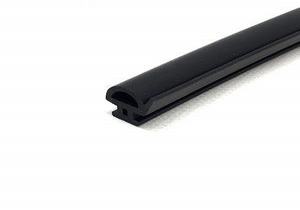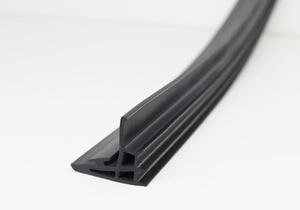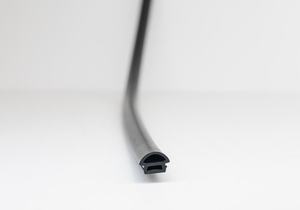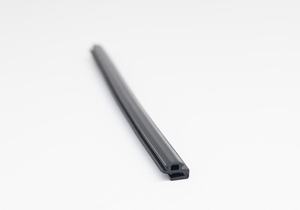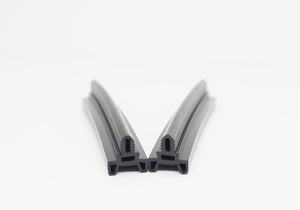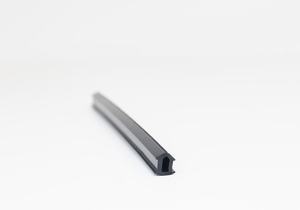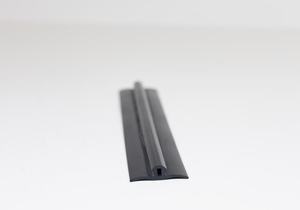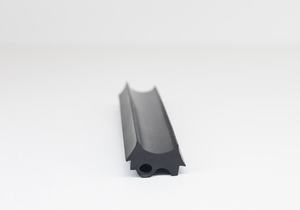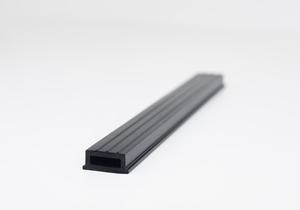Steel door seals, particularly those incorporating dilatation seals, are specialized components designed to provide effective sealing solutions for door assemblies, particularly those made of steel. These seals are essential for maintaining the integrity of the building envelope by preventing the ingress of water, air, dust, or pollutants, while also accommodating movement, vibration, and thermal expansion or contraction in the door system.
Here’s a comprehensive description of steel door seals incorporating dilatation seals:
- Functionality: Steel door seals with dilatation seals serve multiple functions within building systems, including:
- Weatherproofing: These seals create a tight barrier against exterior elements such as rain, wind, snow, and dust, preventing water infiltration and air leakage into the building interior.
- Energy Efficiency: By minimizing air leakage, steel door seals contribute to improved energy efficiency by reducing heat loss in winter and heat gain in summer, thereby lowering heating and cooling costs.
- Soundproofing: Steel door seals with dilatation seals help attenuate noise transmission through door assemblies, improving indoor acoustics and occupant comfort by reducing noise from external sources or adjacent spaces.
- Security: These seals enhance the security of door assemblies by eliminating gaps and weak points where intruders could gain unauthorized access to the building.
- Durability: Steel door seals are engineered for durability and longevity, withstanding frequent use, mechanical stress, and environmental exposure without compromising their sealing performance.
- Types of Steel Door Seals:
- Door Bottom Seals: Door bottom seals, also known as threshold seals or door sweeps, are installed along the bottom edge of steel doors to seal the gap between the door and the threshold. These seals prevent drafts, water infiltration, and dust accumulation, ensuring a tight seal when the door is closed.
- Perimeter Seals: Perimeter seals are applied around the edges of steel doors and frames to seal gaps between the door leaf and the frame. They provide continuous weatherproofing and insulation along the entire perimeter of the door assembly, enhancing energy efficiency and indoor comfort.
- Compression Seals: Compression seals, also known as weatherstrips or gaskets, are installed in the door frame or door jamb to create a compression seal when the door is closed. These seals compress against the door leaf, forming a tight barrier against air and water infiltration while allowing for smooth operation of the door.
- Dilatation Seals: Dilatation seals, as part of steel door assemblies, are designed to accommodate movement, vibration, and thermal expansion or contraction within the building structure. These seals provide flexible connections between door components, ensuring continuity, integrity, and functionality under dynamic or environmental conditions.
- Material Composition: Steel door seals with dilatation seals are typically constructed from durable and flexible materials such as EPDM rubber, neoprene, silicone, or thermoplastic elastomers. These materials exhibit excellent elasticity, weather resistance, and durability, ensuring reliable sealing performance and long-term functionality in exterior door applications.
- Installation: Steel door seals with dilatation seals are installed during the assembly of steel door systems or retrofitting of existing doors. Proper installation techniques and tools, such as screws, adhesives, or fasteners, may be required to ensure a secure and effective seal. Seals should be installed according to manufacturer specifications and industry best practices to achieve optimal performance.
- Maintenance: Regular inspection, cleaning, and maintenance of steel door seals are essential to ensure continued effectiveness and longevity. Inspecting seals for signs of wear, damage, or deterioration, and replacing them as needed, can help prevent air and water infiltration and maintain energy efficiency and indoor comfort.
- Customization: Steel door seals with dilatation seals are available in various sizes, profiles, and configurations to accommodate different door types, sizes, and applications. They can be customized to meet specific performance requirements, aesthetic preferences, or regulatory standards, ensuring compatibility and functionality in diverse building environments.
- Standards Compliance: Steel door seals with dilatation seals may comply with industry standards and regulations established by organizations such as ASTM International, ANSI/BHMA, UL, or NFPA. Compliance with these standards ensures that the seals meet specified performance criteria for weatherproofing, fire resistance, smoke control, and durability.
Steel door gaskets incorporating dilatation seals play a critical role in maintaining the integrity, performance, and functionality of steel door assemblies in buildings. By providing effective weatherproofing, energy efficiency, soundproofing, security, and durability, these seals contribute to occupant comfort, safety, and satisfaction while preserving the integrity of the building envelope. Their versatility, reliability, and compatibility with steel door systems make them essential components in modern building construction and renovation projects.
